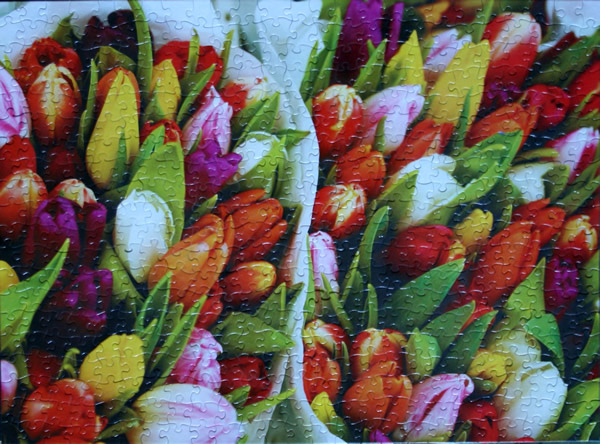
Size: 500 pieces
Dimensions: 48.26 cm x 35.56 cm
Producer: The Canadian Group, Sure-Lox
Notes: Although tulips are often associated with The Netherlands, commercial cultivation of the flower began in the Ottoman Empire. The tulip, or lale (from Persian لاله, lâleh) as it is also called in Iran and Turkey, is a flower indigenous to a vast area encompassing arid parts of Africa, Asia, and Europe. The word tulip, which earlier appeared in English in forms such as tulipa or tulipant, entered the language by way of French tulipe and its obsolete form tulipan or by way of Modern Latin tulīpa, from Ottoman Turkish tülbend (“muslin” or “gauze”), and is ultimately derived from Persian dulband (“turban”).
During the Ottoman Empire, the tulip became very popular in Ottoman territories and was seen as a symbol of abundance and indulgence. In fact, the era during which the Ottoman Empire was wealthiest is often called the Tulip era or Lale Devri in Turkish.
In classic and modern Persian literature, special attention has been given to these beautiful flowers, and in recent times, tulips have featured in the poems of Simin Behbahani. However, the tulip was a topic for Persian poets as far back as the thirteenth century. Musharrifu’d-din Saadi, in his poem Gulistan, described a visionary, garden paradise with ‘The murmur of a cool stream / bird song, ripe fruit in plenty / bright multicoloured tulips and fragrant roses…’. [Wiki]





